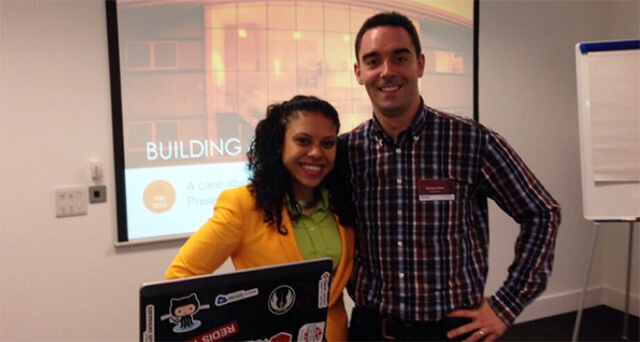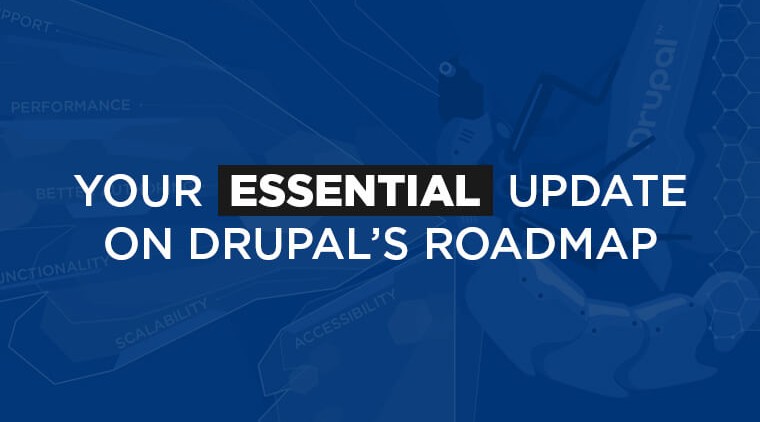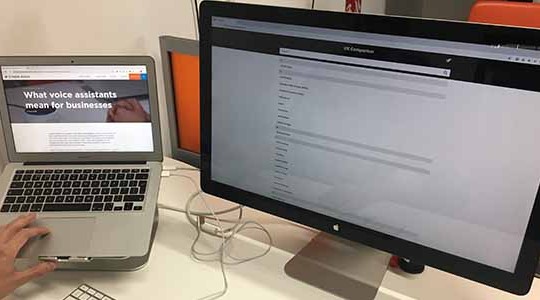Yesterday, I was selected to present a case study for ‘Rackspace Unlocked: The Hybrid Cloud’ in London; this event is part of the Rackspace Academy, where experts are invited to help educate businesses and developers on how to make the most of cloud hosting solutions. My practical expertise on how to build the most effective payment portals in the Cloud became a crucial element of the eCommerce track; I’ve recapped the highlights of the conference here.
There is no doubt that business operations are being transformed by the on-demand compute, storage and networking resources offered by the cloud; the potential to increase application innovation and IT efficiency is particularly high. However, the impact of the hybrid cloud is the most fascinating to explore; as not all applications are suitable for shared-resource, public clouds, the hybrid enables businesses to achieve the benefits of the public cloud with private, dedicated servers.
‘Rackspace Unlocked: The Hybrid Cloud’
The conference was carefully designed to help delegates understand how the proper design of a Cloud architecture can benefit any business case. The morning session established how maximum efficiency can be achieved through considering the following 5 pillars of the cloud:
- Horizontal, where Load Balancers can direct traffic to a pool of server.
- Modular, where a single breaking point is avoided through decoupling the application into several parts.
- Agile, to plan the scaling for the application, and position new servers based on known events (or to react quickly, in the event of unplanned traffic spikes).
- Parallel, which allows several non-dependent processes to run at the same time through Message Queues.
- Secure the service of the platform (Rackspace Cloud) and the service (or application hosted on that server).
It continued to present the various DevOps tools available, from server configuration management, to code reviews, continuous integration and server monitoring. These are underpinned by a single aim: no employee should have to repeat the same tasks several time when it comes to deploying a Cloud server or an application on a server. This is because all the tools are available today to automate this process; machines can be used to process repetitive tasks, and people’s time can be better spent elsewhere.
Ecommerce and Digital Content
The eCommerce track showed how to apply the principles above to achieve the best results in this specific environment. I was invited to present the ‘real life’ example, through detailing how we implemented a successful PCI Compliant Payment portal in the Cloud for our client dlc. The presentation took the audience through the various phases of the project, revealing and how Cyber-Duck implemented its ISO-accredited User Centred Design (UCD) process to deliver a great experience for every user. Hosting, performance and security were critical for the project, as a web-portal processing a high volume of payments; so, I explained how setting up flexible Cloud instances helped us build a robust and secure platform, which achieved the all-important PCI Compliancy. The slides from my talk are available below:
Working with Nikki Tirado, a Project Trainer at Rackspace, this was followed by a workshop on load testing and event-based scaling, with real-time demos on Rackspace Cloud servers. The full deck of slides are available here. Overall, it was a great day for Cloud hosting; hundreds of attendees left ready to embrace the benefits of this technology!





